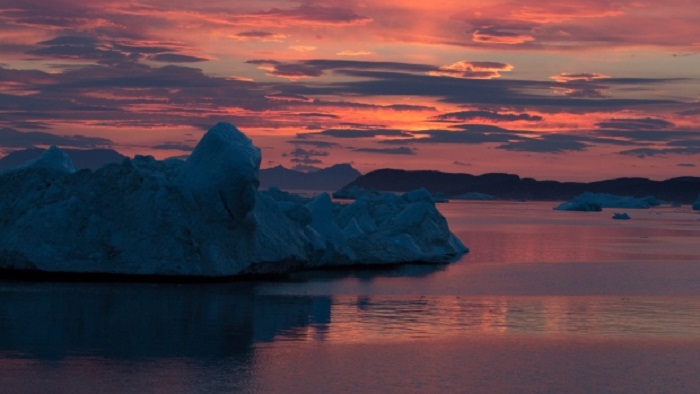Without that natural brake, the glacier in the cold north was now sliding quicker and more icebergs were snapping off,
adding a net five billion tonnes of ice a year to the oceans, according to the study based on satellite and aerial surveys.
"Similar changes — even larger — are under way in the south," Jeremie Mouginot, lead author of the study at the University of California, Irvine (UCI), told Reuters in an e-mail.
 ""
""Greenland contains enough ice to raise world sea levels by about six metres (20 feet) if it ever all melted in a slow-motion collapse that could take thousands of years.
Its ice losses, along with thawing ice from the Alps to Antarctica, have raised sea levels by about 20 centimetres since 1900. That aggravates storm surges for cities from New York to Shanghai and threatens low-lying tropical island nations.
A nearby north Greenland glacier, Nioghalvfjerdsfjorden — often called "79" for ease of pronunciation — was also melting fast, the study said. But its slide was restricted by an uphill section of seabed under its icy base.
`Staggering` changes
"The changes are staggering and are now affecting the four corners of Greenland," Eric Rignot, a co-author at UCI, said in a statement.
Almost 200 nations will meet in Paris for a summit starting on Nov. 30 to try to limit climate change.
The U.N. panel of climate scientists estimates that sea levels may rise by between 26 and 82 centimetres (10 and 32 inches) this century.
Ruth Mottram of the Danish Meteorological Institute, who was not involved in Thursday`s study, said Greenland`s glaciers sometimes accelerate after small changes in the environment.
"A small retreat can become a much bigger retreat because these glaciers are only stable when they are resting on bedrock," she said.
Another study has estimated Greenland lost a net 211 billion tonnes of ice annually from 2000-11 — roughly 0.6 millimetres of global sea level rise a year — with icebergs and melting ice exceeding snowfall that replenishes the ice sheet.
More about:
















































